Ferrari in F1
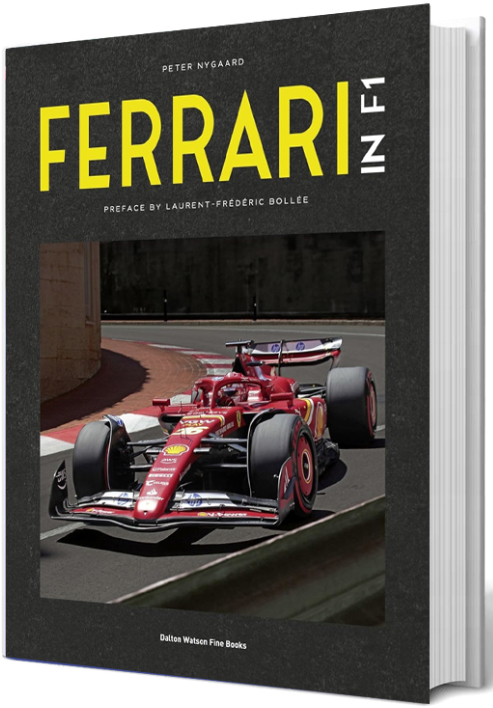 by Peter Nygaard
by Peter Nygaard
“The purpose of these lines is not to impress unconditional Ferrari admirers with a list of famous names. I mention this only to enlighten the reader as to the reasons behind this work. My purpose here is not limited to camshafts and cylinder angles that would have won Ferrari the Zandvoort title. This book tells the story of all those who, for 70 years, have contributed to the legend of the Prancing Horse in Formula 1.”
The best of both worlds: a photo book by a professional race photographer and archivist, with texts by a proper motorsports historian—and they happen to be one and the same person. The biggest decision you’ll have to make is not whether to get this book but in what section of your library to shelve it, a choice that will be partly affected by whether or not you have Nygaard’s previous photo/history book. (There is to be a third one, topic unknown, so the head-scratching will continue.)
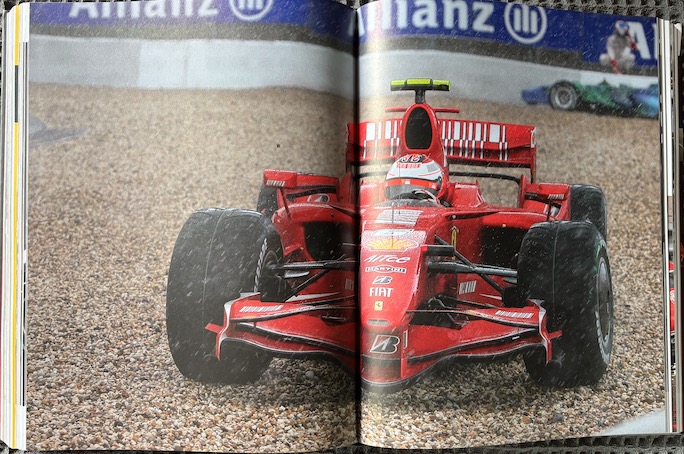
The gravel is still flying, fat rain drops are coming down, the driver in the background is already out of the car. And all in one shot—a good day for a photographer.
At the point at which you’d be reading the above lines in the book, nearing the end of the Foreword, you’ll have just absorbed a passage in which the author self-deprecatingly quotes F1 driver Nigel Mansell, who had given him a demo ride in a Minardi two-seater, referring to him as “the Great Dane”—because Peter Nygaard is in fact Danish and, well, not tiny. Besides, at the best of times friendly ribbing is a form of respect, and respect is certainly something that Nygaard’s four+ decades as a reporter and chief of Grand Prix Photo have earned him.
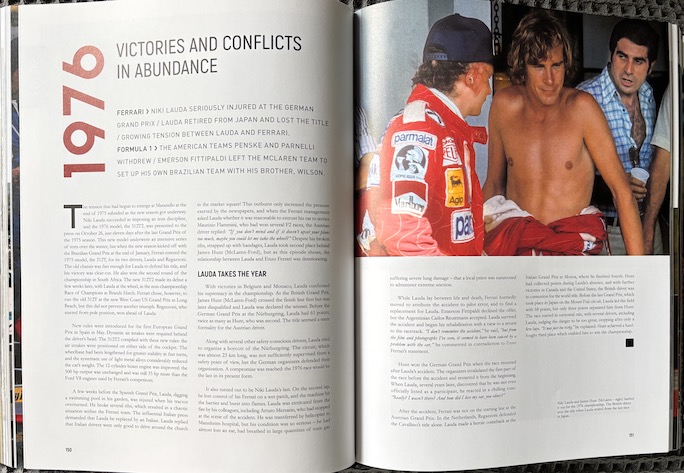
No friendly ribbing here, this body language reeks of tension. The personalities of Lauda (l) and Hunt were vastly different, albeit overdramatized by the press.
We were mightily impressed by the first book and all the positive things we said about it apply here again, including the low price which is all the more remarkable since despite four years of inflation the book is still only $89 (but the £ price has gone up); the one thing it did lose is the ribbon bookmark.
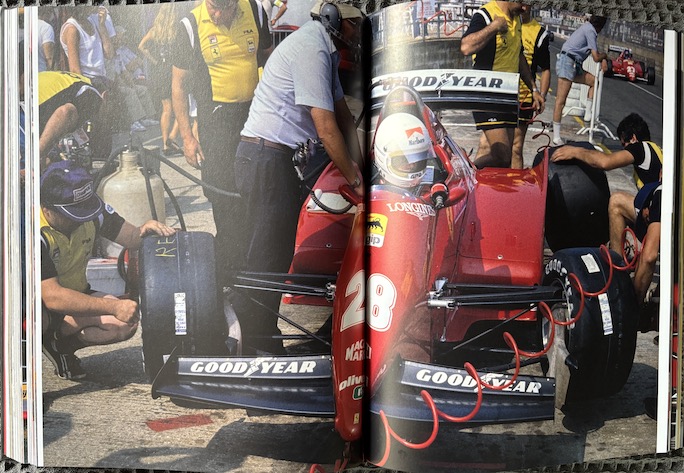
A 1983 pit scene (guys in shorts, random people milling about) and one from 2008 (every move choreographed to the nano second).
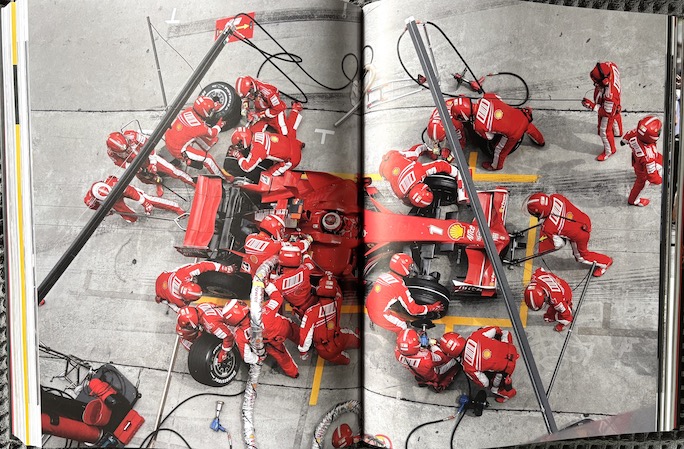
In case you are new to this type of book or to Ferrari you’ll want to ponder the fact that, yes, there is extraordinary hype and assumptions about cachet regarding the road cars but Ferrari race cars and Formula 1 share more than the letter “F,” having earned an objectively unassailable place of distinction, even if they’re not always winning: no team has competed in F1 for longer, had more poles, earned more points, has more World Championship titles and GP victories. Nygaard also makes a case for the scuderia being the most popular team in the sense that emotion, passion, and “the myth” must amount to something tangible even if not quantifiable.
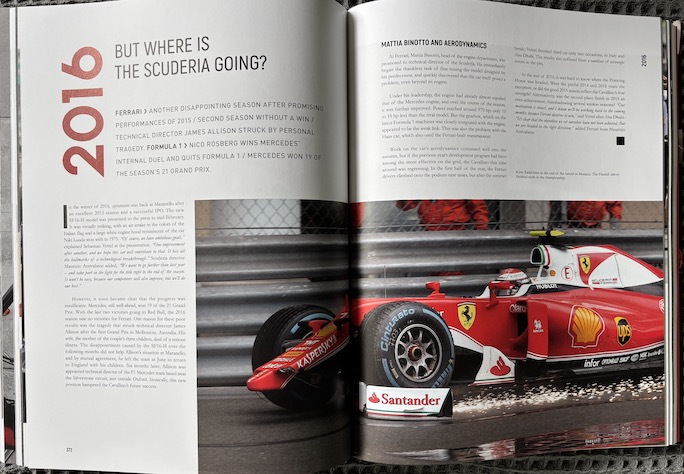
Some picture-snappers can’t keep different elements in focus when everything is standing still. Look at the sparks flying—we’re definitely under full sail here.
The notion of the Ferrari myth is certainly on the mind of Laurent-Frédéric Bollée who wrote the Preface. The book does not introduce him but you might well recognize the name for any number of reasons: comic strip writer (including epic racing stories for the Plein Gaz series published by Glénat Editions in France), sports biographer, motorsports journalist to name a few.
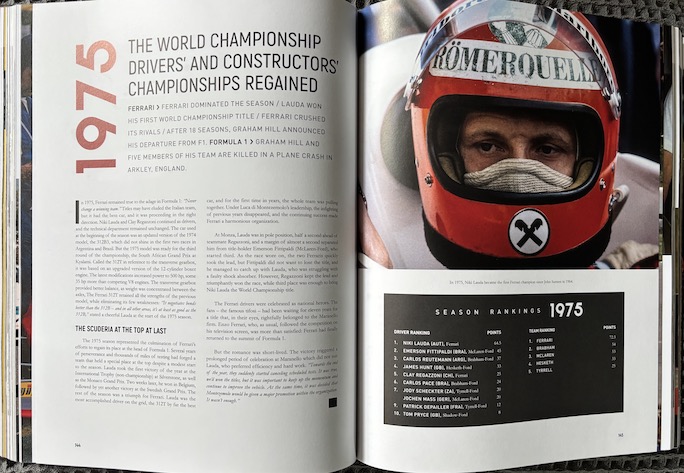
Each season is accompanied by a results table.
After a few pages of preliminary remarks about the place of F1 on the motorsports food chain and the foundational role Enzo Ferrari’s “determined, almost ruthless quest” plays in the history of the sport the book zooms in on a decade-by-decade, and within that year-by-year exploration of F1 racing. Each season is given 4–5 pages of which at least one is big-picture narrative. Every now and then a special short feature called “Focus” (below) is interspersed to introduce peripheral topics. Nygaard’s grasp of the subject matter is utterly competent and his writing engaging. A short note on the CIP page explains that the book’s production schedule allowed it to include the 2024 Italian Grand Prix (i.e. two-thirds into the season) which fittingly happened to be the first time since 2019 that a Ferrari won at Monza.
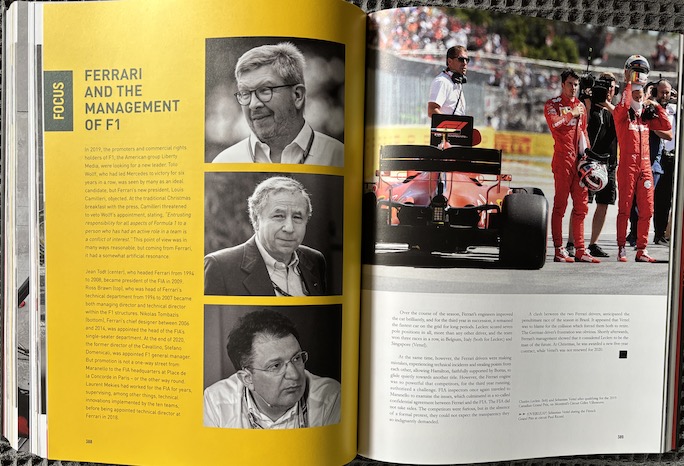
To the been there/done that specialist reader the above may not move the needle much—but how’s this: photos you mostly haven’t seen before, at least not in print. If you are a researcher frequenting Nygaard’s online archive you may have seen one or the other but not in context and not captioned as they are here.
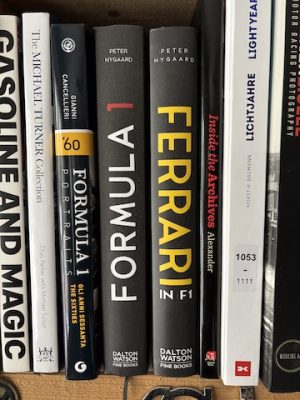
Last Words
If you do shelve the books side by side you’ll note a neat bit of symmetry—the first book has the title on the spine in the customary European manner, bottom to top, whereas the second one runs the other direction. (Which works better? There is a right answer: picture the book lying flat, cover facing up.)
His Grand Prix Photo agency features not only his own archive, with work starting in the 1980s, but also several others (cf. Nigel Snowdon, Giancarlo Cevenini, Dominique Leroy) he has acquired over the years and that go back to the first F1 season in 1950. If there is a nit to pick about the photos in this book it is that they are not attributed but for most readers this is not really a matter of practical consequence.
All photos are well reproduced, and only a few of the older ones are handicapped by the technical limitations of their day. The paper has a fingerprint-resistant satin finish.
Also available in Danish and French editions (from other publishers).
Copyright 2025, Sabu Advani (Speedreaders.info
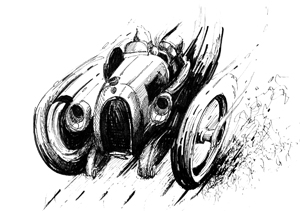

 RSS Feed - Comments
RSS Feed - Comments
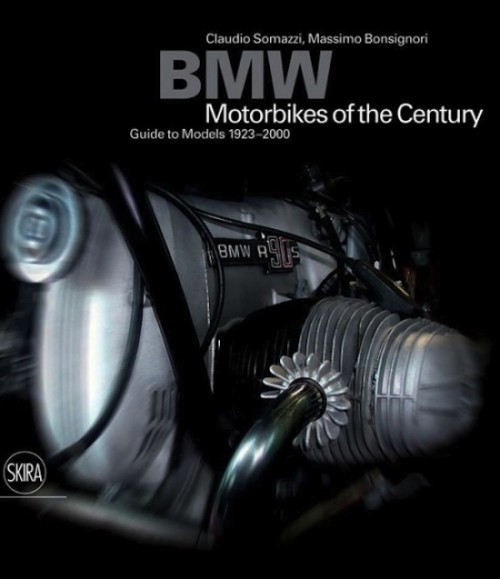




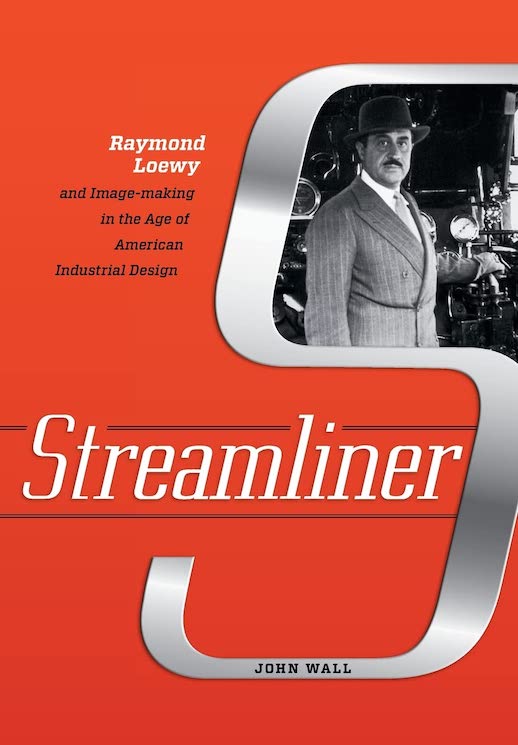
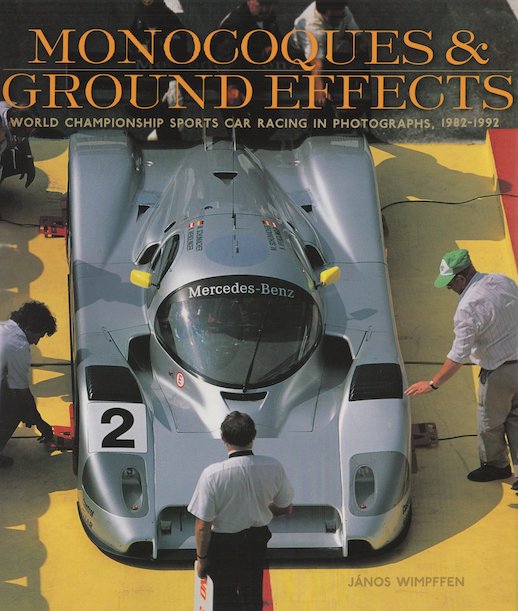

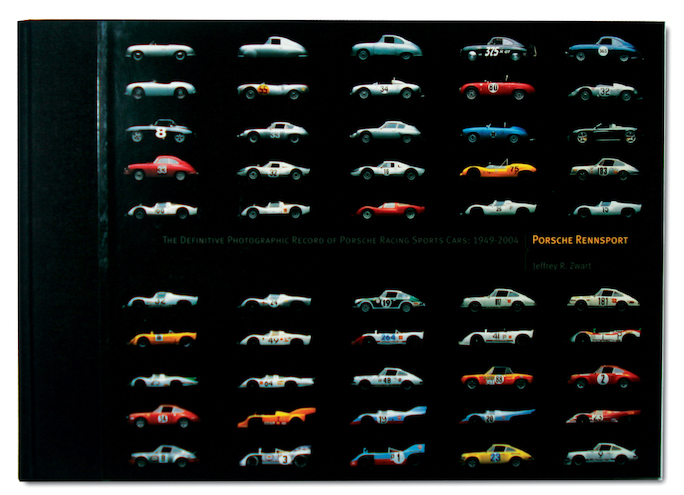




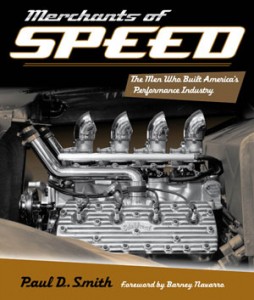
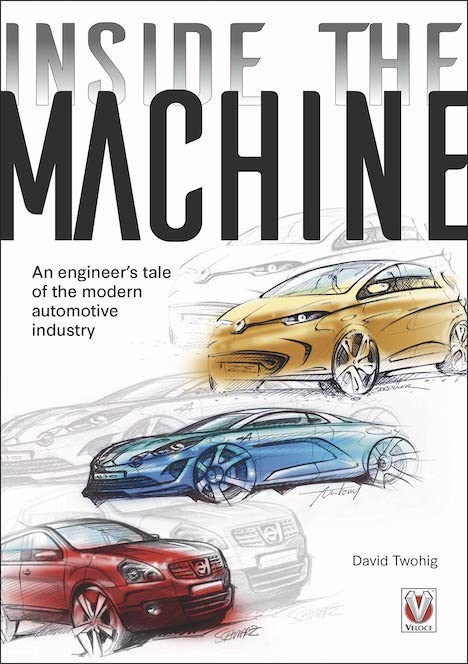


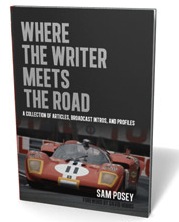
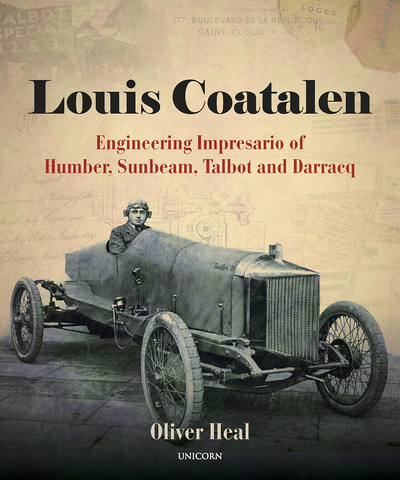

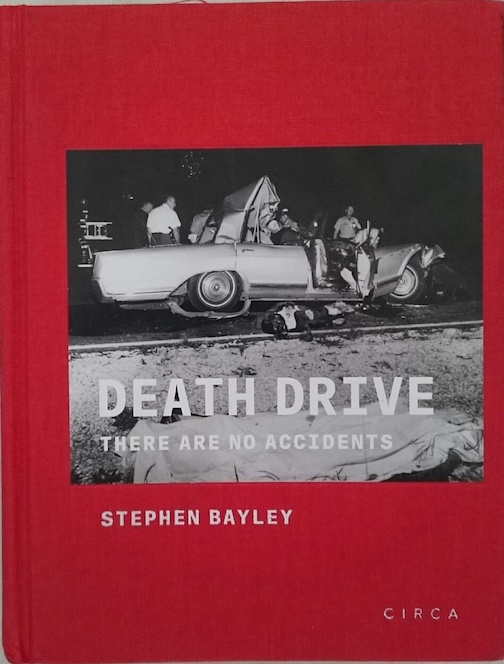


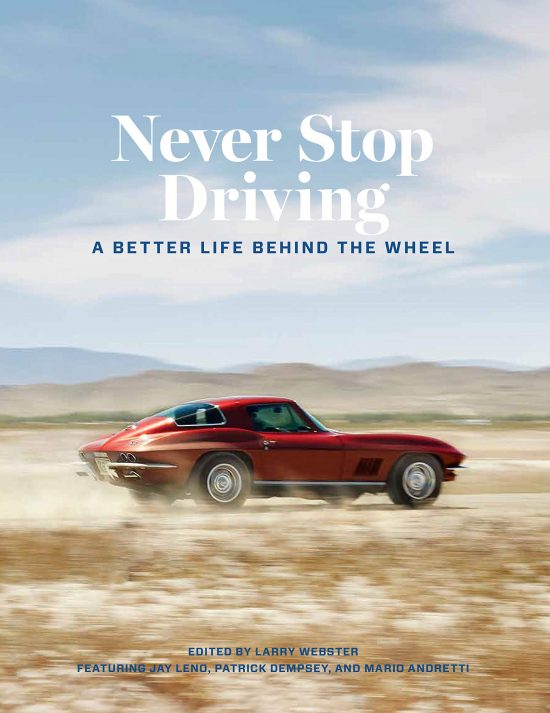

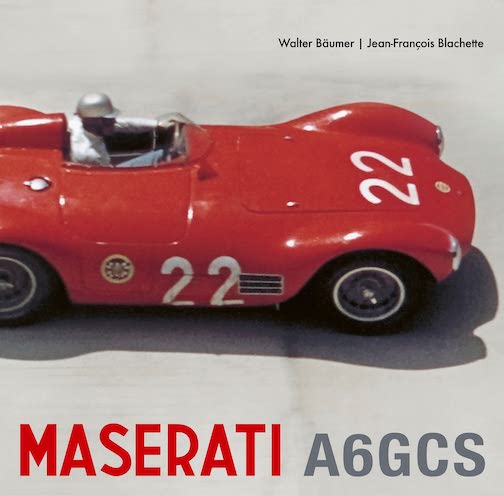

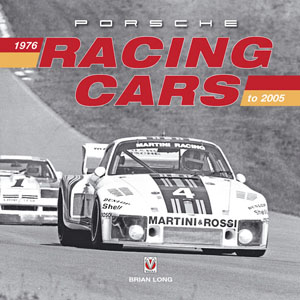



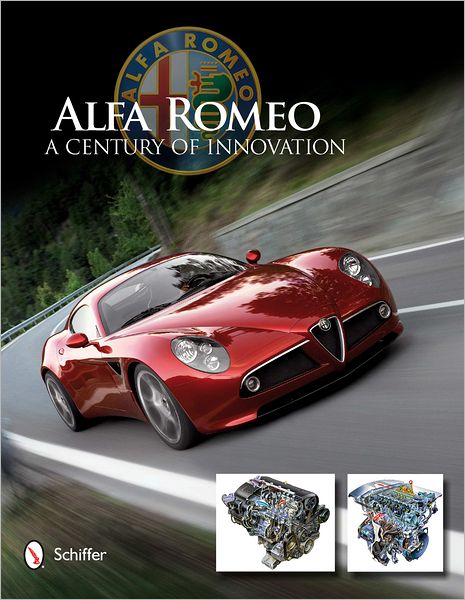

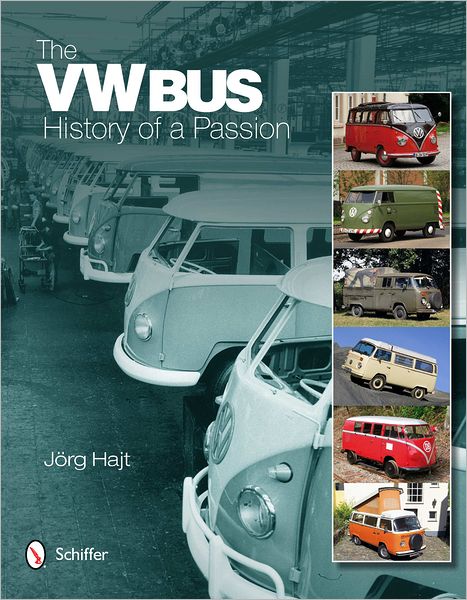

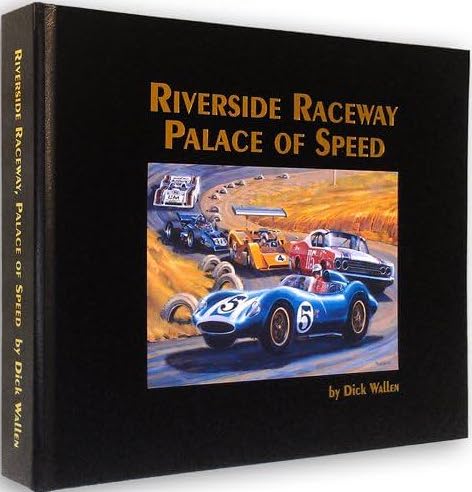

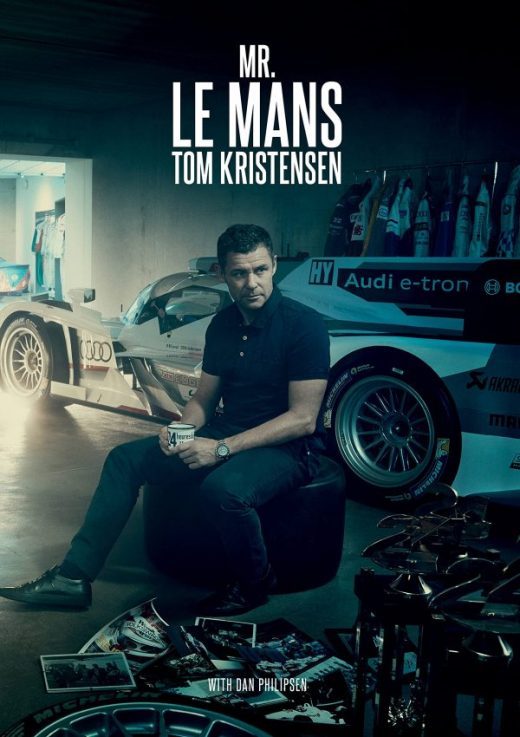
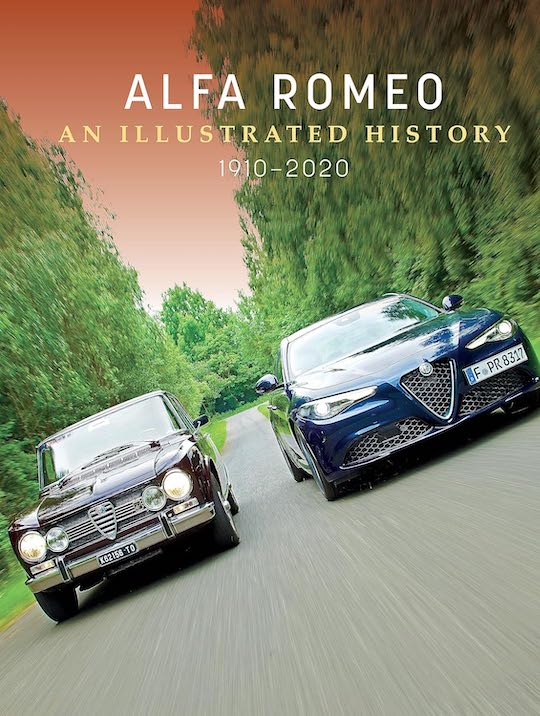
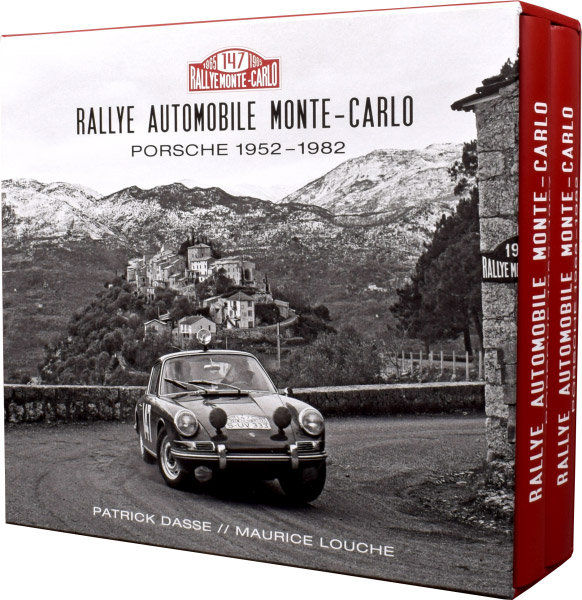






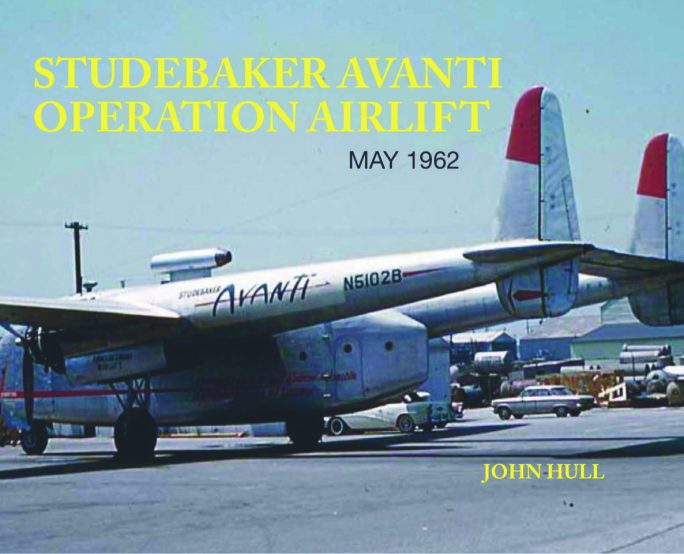

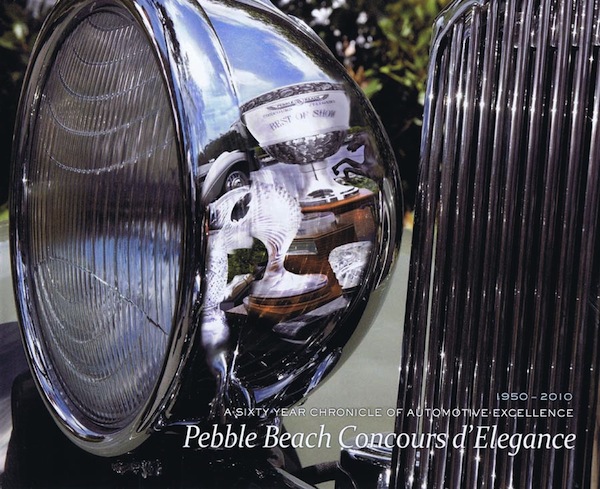




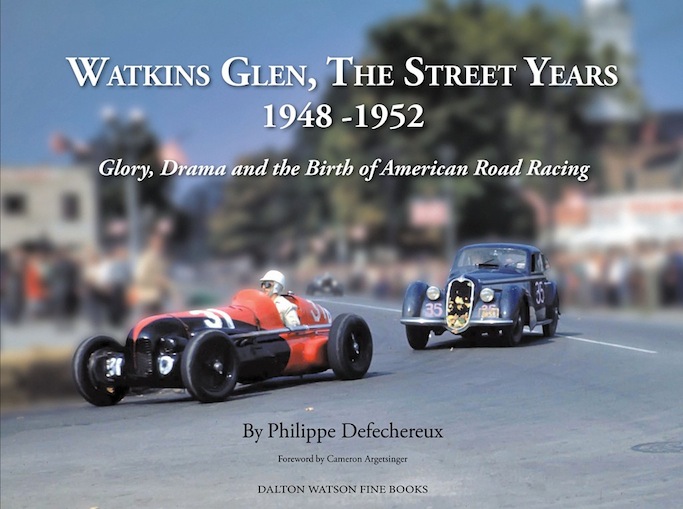

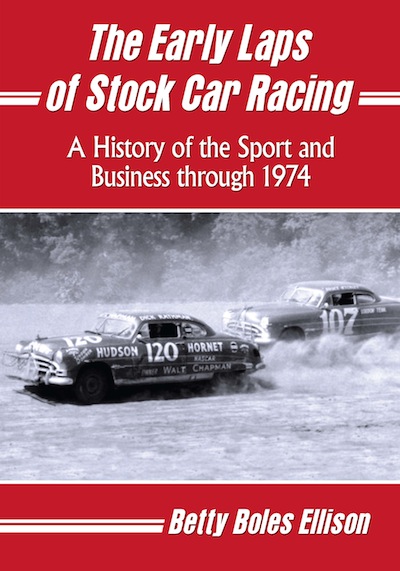

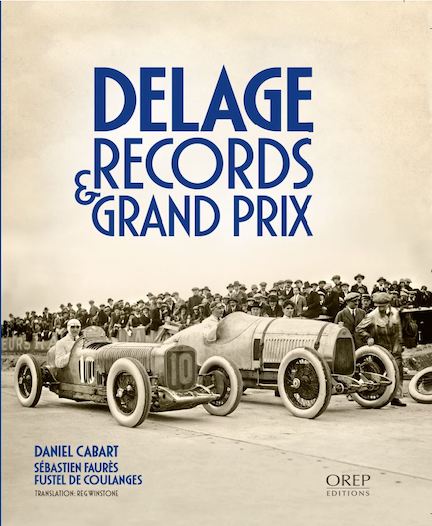
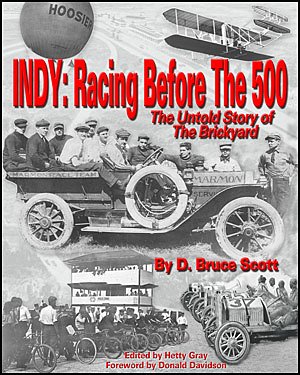


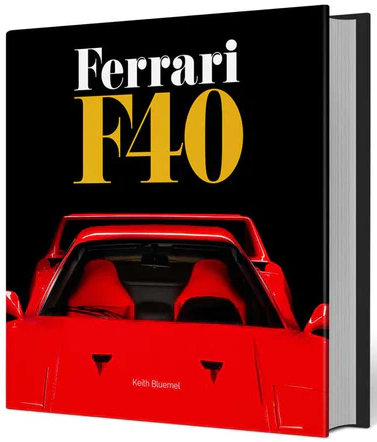
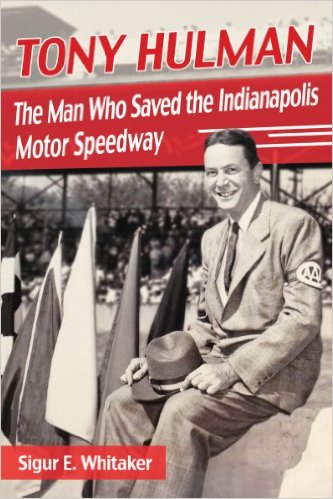
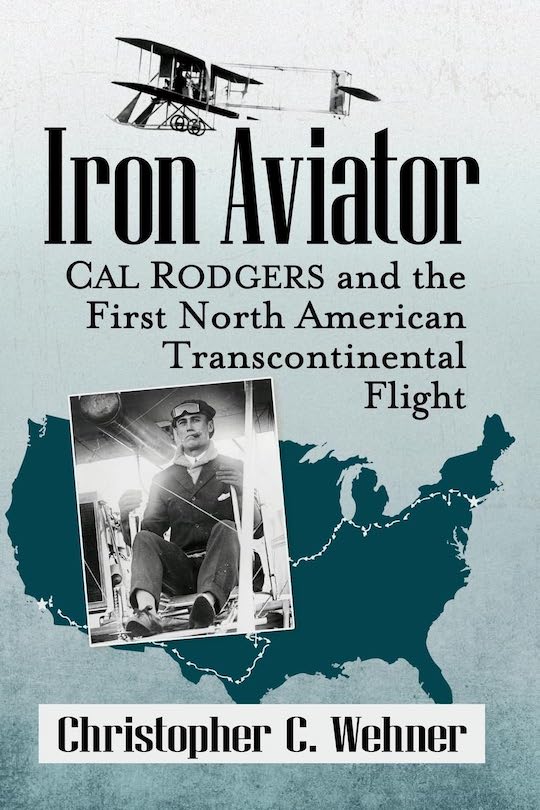

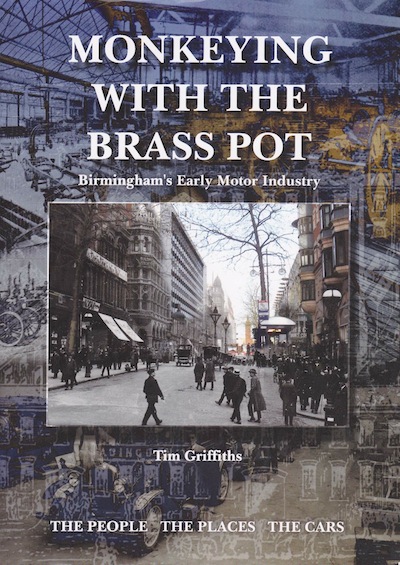

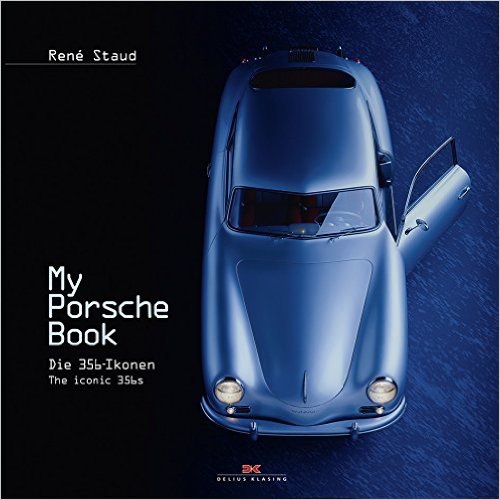
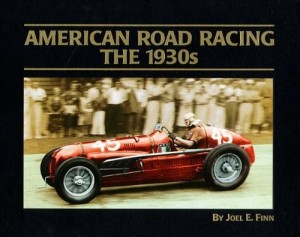

 Phone / Mail / Email
Phone / Mail / Email RSS Feed
RSS Feed Facebook
Facebook Twitter
Twitter